

Dutch electrification scenarios show disruptive change in CO2 emissions and electricity use
28-05-2018 | Project results | P2Integrate
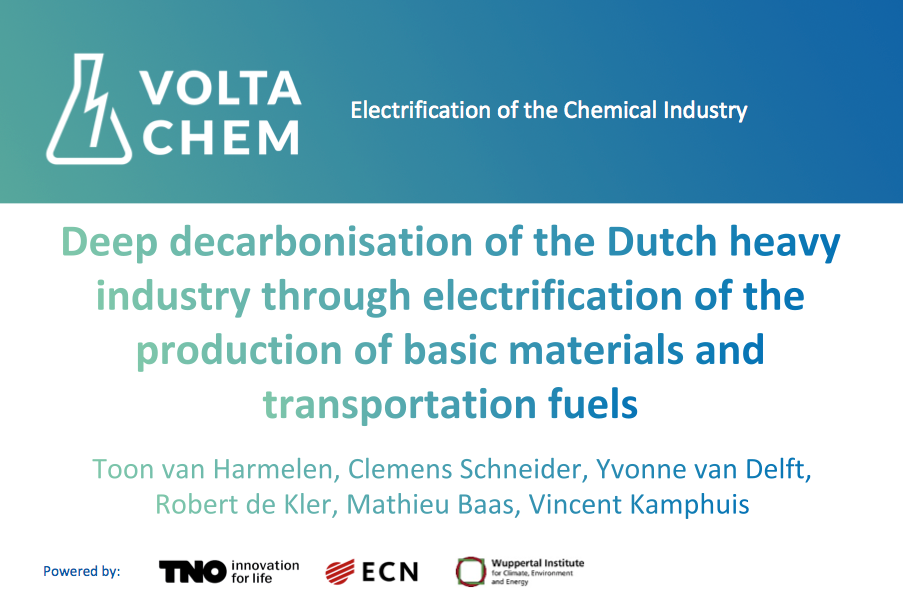 Industrial electrification is an important route for decarbonising the Dutch industry. Until now, it has been unclear what the potential of implementing innovative electrification options is regarding CO2 emissions and energy use in 2050. For that reason, VoltaChem, together with researchers from the renowned Wuppertal Institute in Germany, has developed three independent electrification scenarios for the Dutch industry towards 2050 and assessed its impact on decarbonisation.
Industrial electrification is an important route for decarbonising the Dutch industry. Until now, it has been unclear what the potential of implementing innovative electrification options is regarding CO2 emissions and energy use in 2050. For that reason, VoltaChem, together with researchers from the renowned Wuppertal Institute in Germany, has developed three independent electrification scenarios for the Dutch industry towards 2050 and assessed its impact on decarbonisation.
The ‘what-if’ scenarios sketch the operating boundaries of the sectors and governments when the potential of electrification technologies is utilized. They show it is technically feasible to reduce current life cycle CO2 emissions to near zero in 2050. The largest impact is found in the value chains towards fuels and basic chemicals, in which material exports are sustained and fuel exports are heavily reduced. Implementation will demand large amounts of renewable power to be installed or imported, ranging from 1.5 to 2.5 times the Dutch North Sea wind potential. This equals roughly one-third of the total North Sea wind potential. With these results in hand, better decisions can be made regarding Power-2-X development and its impact on business and policy.
Three distinct electrification scenarios
The VoltaChem study investigates three distinct ‘what-if’ electrification scenarios to reach near zero CO2 emissions in 2050 in the majority of the Dutch industrial sectors. These include the basic chemicals, metal, food, minerals, paper & pulp and transport sectors incl. fuel supply. The first scenario, All Electric (A), sketches the full potential of direct electrification exploited in all sectors. In the Big on Hydrogen (B) scenario industry is expected to mainly use green hydrogen as an energy carrier, while in the Competition (C) scenario electrification is combined with both the use of biomass and fossil sources with Carbon Capture and Storage (CCS).
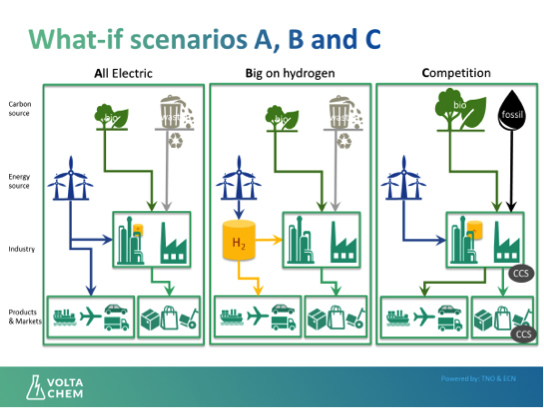
Impact on energy demand
In all three scenarios, technologies were identified that are most likely to be ready for implementation in the relevant sectors towards 2050. The characteristics of these technologies, like feedstock use, energy use and efficiency, were assessed by experts and implemented in an energy flow model. This led to the following evaluation:
A - The All Electric scenario explores the industry’s potential for full electrification. Most, if not all, processes will be based on electricity as a direct energy source and will use waste and (for growth) biobased carbon feedstock. Relying on full electrification reduces the total industrial energy demand by 20% (including storage losses in batteries) and seems especially interesting for the transportation sector and the supply of heat (especially steam).
B - In the scenario Big on Hydrogen, the use of green hydrogen as the primary energy carrier leads to an energy demand in 2050 that compares roughly to current levels. Especially for the basic chemicals sector, this scenario seems to be an interesting alternative to a fossil-based production.
C - The more conventional Competition scenario utilizes a combination of biomass for decentralized energy use in transport and fossil resources for large energy consumers. This requires the use of Carbon Capture and Storage to maintain near-zero CO2 emission in 2050. This scenario leads to a significant increase in primary energy demand of 30%, which can be largely attributed to the lower overall efficiency in the transportation sector compared to battery use or hydrogen in fuel cells.
Electrification opportunities and challenges
From all three scenario’s it can be concluded that it is technically possible to achieve near-zero CO2 emissions towards 2050 employing industrial electrification. However, industrial electrification will require an amount of renewable energy of about 1.5 to 2.5 times the Dutch North Sea wind energy potential. Hence, parallel implementation of industrial electrification technology and renewable electricity and hydrogen technology will be needed. Also, each scenario will have its own infrastructural challenges, like storage, transport and safety, requiring large investments and related risks. A favorable development of deep decarbonised Dutch industry consists likely of a combination of elements from the three scenarios. Clear regional, national and international roadmaps and long-term public-private commitments will be needed to alleviate risks and stimulate investments in the right direction.
Applicability for specific situations
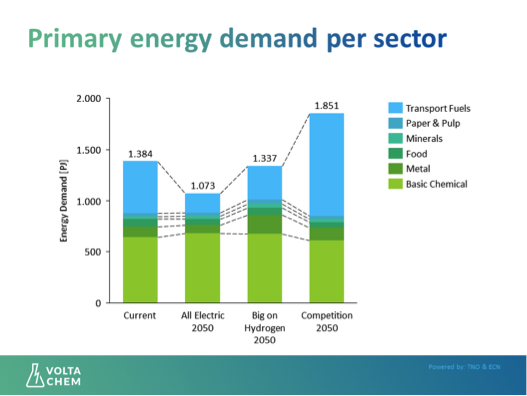
Concluding, the developed scenarios give insight into the possible impact of electrification technologies towards 2050 and sketch the boundaries of the field in which sectors and governments can operate. The results are scheduled to be presented at the ECEEE conference on 11th of June and the ECCM conference on 29th of June. The more detailed results are currently written down into a scientific paper.
Are you interested to find out what the opportunities and impact of electrification technology can be for your organization? Please contact Monique Rijkers or Robert de Kler to discuss how VoltaChem can help to achieve your goals!
Download here the summary presentation of the scenario results.

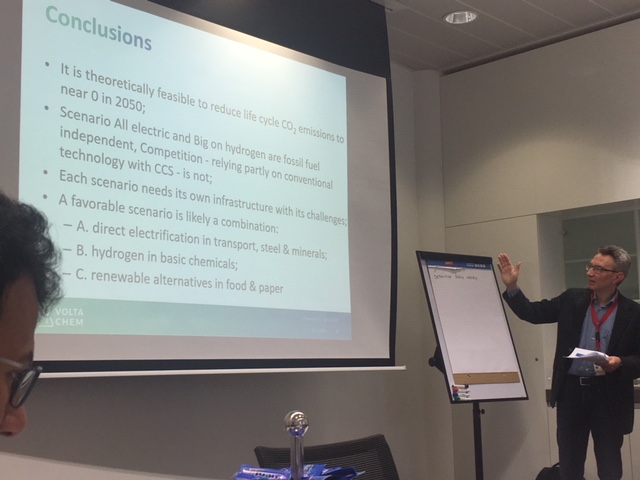
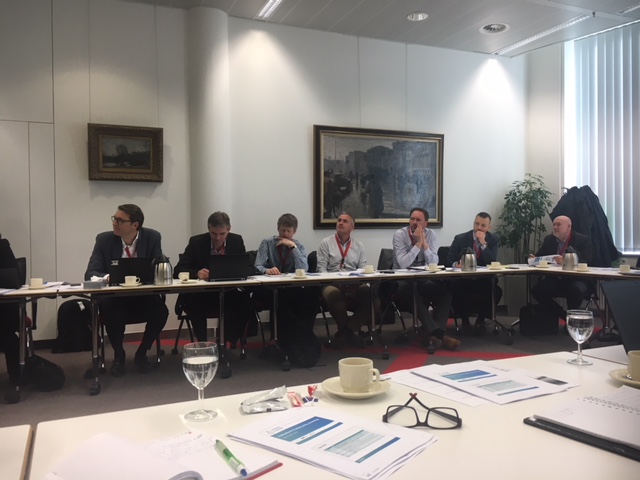
Share this page: